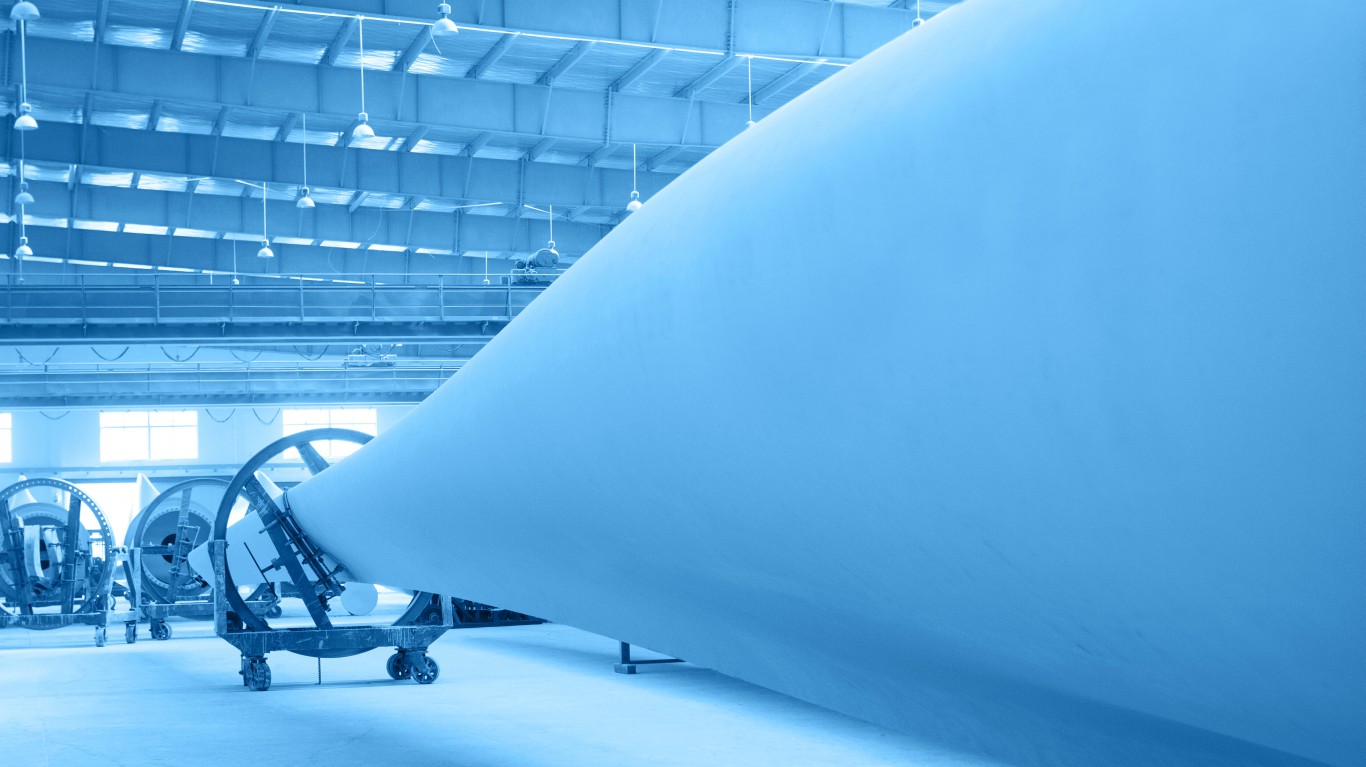Energy
A New Problem for Clean Energy: Dealing With Old Windmill Blades

Published:
Last Updated:

If you live in a state where wind power is generating an increasing share of electricity, you’ve probably passed a windmill blade being towed down the highway and assumed that another new wind turbine is being installed somewhere. You might be wrong.
Wind turbines put into service in the 1990s and the 2000s are reaching the end of their useful lives of 20 to 30 years and are being replaced. That’s creating a massive amount of junk that needs to be disposed of or recycled.
By one estimate, by 2020 some 50,000 tons of old blades will be added to the world’s waste stream, and by 2034 that total will rise to 200,000 tons. The blades (older ones are made from fiberglass while new ones are constructed from carbon fiber) are both large and difficult to recycle because they need to be strong in order to do their job.
MidAmerican Energy, for example, a Berkshire Hathaway-owned electricity provider in the Midwest, is upgrading a 110-turbine, western Iowa wind farm with taller towers, longer blades, new hubs and refurbished generators, according to an AP report from last week. Each turbine will send three blades to a landfill 130 miles away in Nebraska.
The metals in the blades, mostly steel and copper, can be recycled, U.S. Department of Energy Researcher Daniel Laird told The Des Moines Register. Landfill operators thought cutting the old blades into 40-foot sections would make them simple to crush and compact. It turns out that the blades don’t give up so easily.
In the Netherlands, old blades are cut up into pieces of various sizes and used to create playgrounds and other public outdoor furniture. Some have been configured as park benches with one blade positioned as the seat and another as the back.
According to a report at Chambre 237, researchers in Denmark are working on ways of separating the glass content of the blades from the fiber so that each could be recycled. In Washington state, other researchers have found that when the blades are cut into small pieces they can be used to make a new kind of composite material that could be used to manufacture other products.
Iowa State University associate professor of industrial and manufacturing systems engineering, Frank Peters, told the AP, “Unless there’s a better solution, they are going to get landfilled. But if you look at the total economic and environmental costs of reprocessing that blade, landfilling may be the best solution.”
Or maybe some creative thinking. A Dutch firm said that if the country used old blades to produce just 5% of their annual production of street furniture like playgrounds, public benches and bus shelters, the country would be recycling 100% of the 400 new blades it makes annually.
After two decades of reviewing financial products I haven’t seen anything like this. Credit card companies are at war, handing out free rewards and benefits to win the best customers.
A good cash back card can be worth thousands of dollars a year in free money, not to mention other perks like travel, insurance, and access to fancy lounges.
Our top pick today pays up to 5% cash back, a $200 bonus on top, and $0 annual fee. Click here to apply before they stop offering rewards this generous.
Flywheel Publishing has partnered with CardRatings for our coverage of credit card products. Flywheel Publishing and CardRatings may receive a commission from card issuers.
Thank you for reading! Have some feedback for us?
Contact the 24/7 Wall St. editorial team.